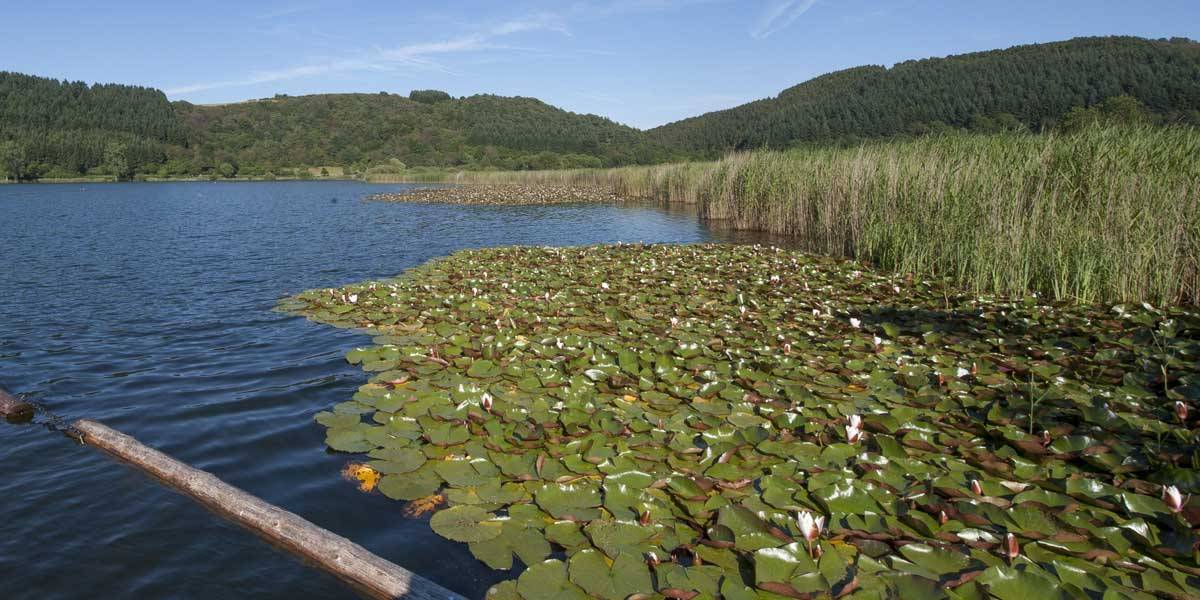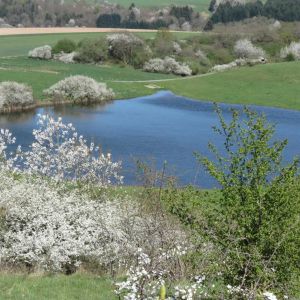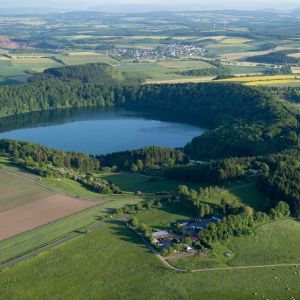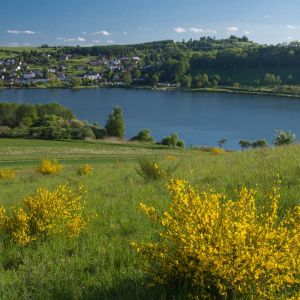The youngest volcanic form in the southern volcanic Eifel is the famous evidence of earth's history, the Eifelmaars. They are unique, landscape-defining elements in the middle of a hilly low mountain landscape.
Facts
- Size: 1201 hectares
- Districts and independent cities: Bernkastel-Wittlich, Cochem-Zell, Vulkaneifel
- Associated municipalities and unaffiliated cities: Daun, Kelberg, Manderscheid, Ulmen
The lake and peat sediments of the maars are of great scientific importance for research into the history of vegetation, settlement and climate. From a nature conservation perspective, the Eifel Maars, as biologically diverse habitats for rare animal and plant species, are among the fauna-flora-habitat areas in Europe that are particularly worthy of protection and preservation.
Diverse stars among Europe's FFH areas
Whether as nutrient-poor deep lakes, as shallow ponds with floating and diving leaf communities, as low-moor-like siltation stages or intermediate and high-moor dry maars - the diversity of fauna and flora is as diverse as the different appearances of the maars. The forest-free raised and intermediate bog vegetation of individual dry maars is a refuge for extremely rare species of butterflies and dragonflies.
Location:
Occident animal species
- Common emerald dragonfly
- Spear Azure Maiden
- Red-backed Shrike
- Red Kite
Occident plant species
- Broom broom
- Hainsimsen-Beech Forest
- Woodruff beech forest
- Plants of moorlands







